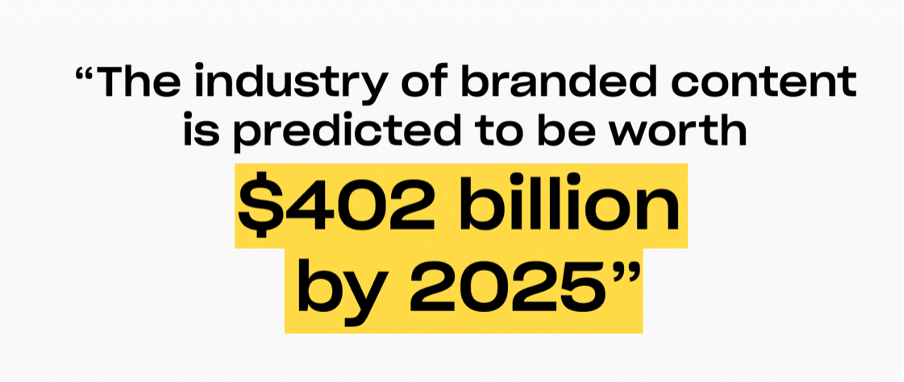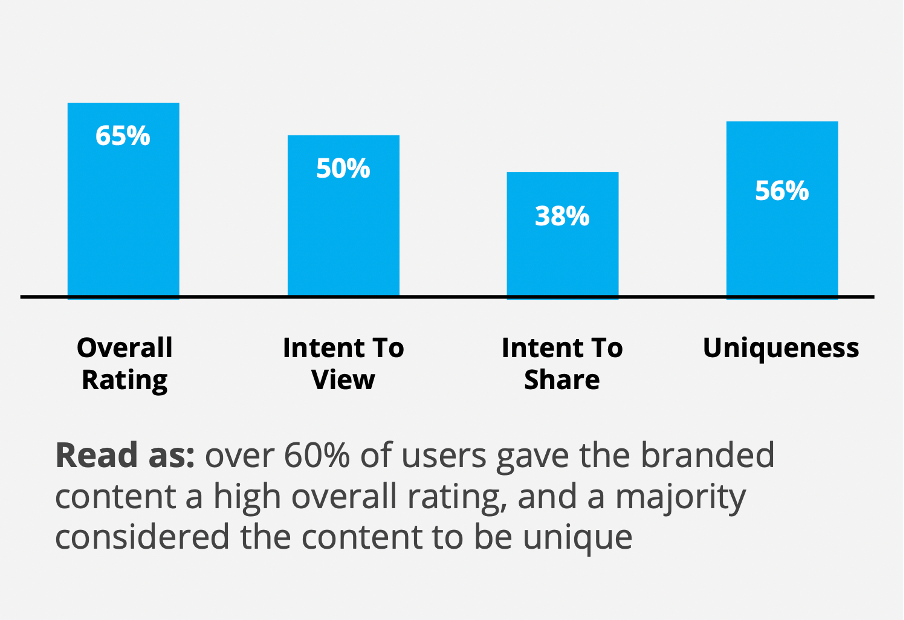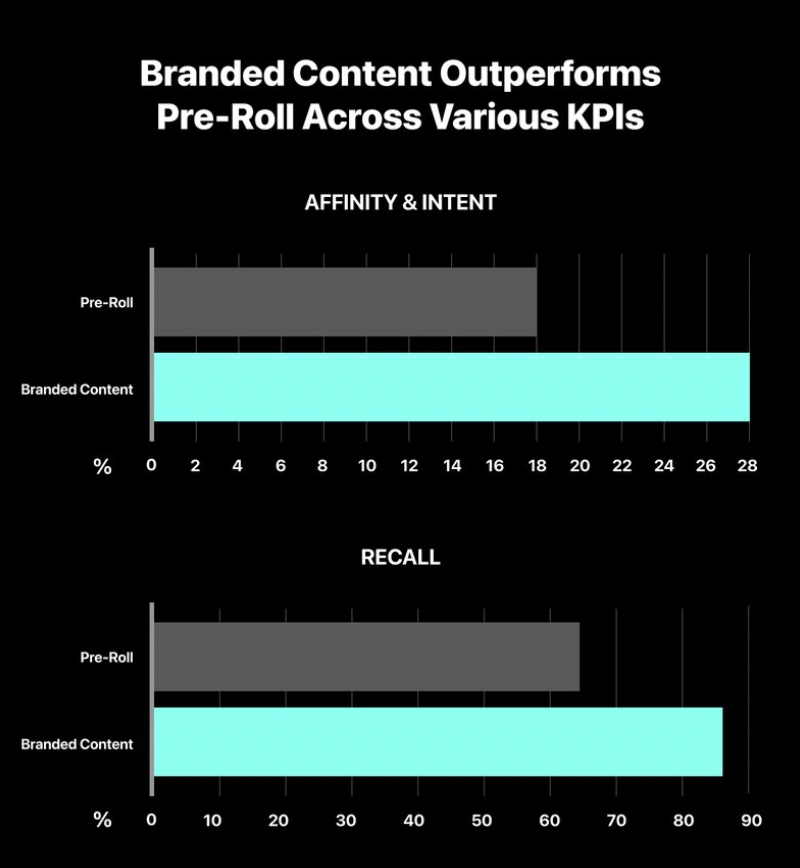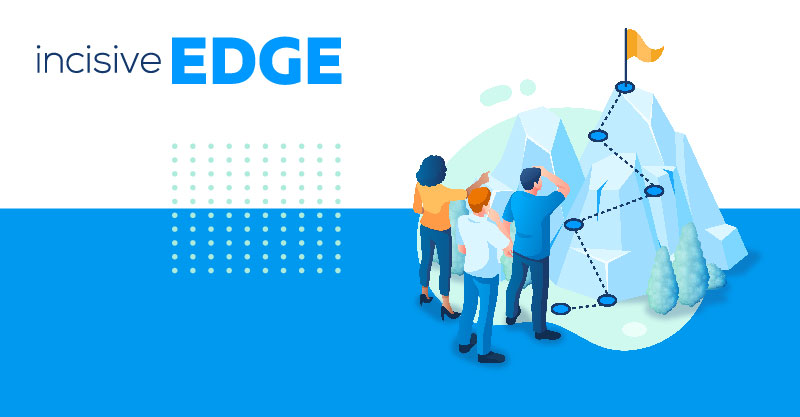As people the world over become more and more susceptible to banner blindness – i.e., the state of being so used to online ads that you simply don’t see them anymore – brands need an innovative strategy to engage consumers and win back their attention.
Branded content campaigns are increasingly becoming the go-to technique today’s best marketers are using to make customers sit up and take notice.

(Image source: getfluence.com)
What is branded content?
Branded content – also known as content branding – is a content marketing technique in which businesses do not attempt to advertise their goods, products, or services at all. Instead, content branding focuses on building an emotional connection between audiences and the brand.
This is important. At its core, branding is about capturing what your business stands for – your values, meaning, and intentions. A branded content marketing strategy enables businesses to express these qualities, and thereby encourage audiences to associate their own values with the brand.
In many ways, content branding takes an opposite approach to traditional marketing and advertising. Rather than going for the direct, hard sell, branded content aims to create conversations around the brand itself, as opposed to any specific product or service being sold.
Such a concept is undoubtedly best illustrated with some examples.
So, let’s take a look at a couple of high-profile branded content marketing campaigns so you can see precisely what we mean by content branding.
Branded content examples
The first example comes from Red Bull and its famous Supersonic Freefall stunt in which renowned base jumper and all-round dare devil Felix Baumgartner took on a record-breaking skydive from space wearing Red Bull gear.
Evoking Red Bull’s tagline in no uncertain terms – “Red Bull gives you wings” – the content does not encourage consumers to purchase the Red Bull product in any way, shape, or form.
However, the campaign most certainly leaves consumers in awe of witnessing something truly unique – and makes them more aware of the brand and what it stands for.
This is branded content marketing at its best. Audiences don’t feel like they are being sold a product, because the content isn’t presented as an advertisement (even though it is).
Another high-profile example is The Lego Movie and its sequels.
Once again, while the Lego movies (and the various Lego TV series for that matter) do not ask consumers to interact with or buy Lego products, they are nonetheless huge endorsements for Lego toys.
This is because companies like Lego, use branded content to highlight their values.
In Lego’s case, it’s family fun, good times, laughter, and imagination – the building blocks, (ahem), of an engaging campaign for a toy product, and one that is sure to inspire young children to ask their parents for a new Lego toy for their birthday after watching such a great movie.
Developing a branded content strategy – what you need to know
More and more brands are recognising the immense power of branded content to engage with a target audience. In fact, according to recent figures, the branded content industry is expected to be worth $402 billion by 2025.

(Image source: getfluence.com)
The reason is that branded content works.
A recent study by Nielsen reveals that almost two-thirds of consumers (65%) rated branded content highly, and over half found the content to be unique (56%).

(Image source: nielsen.com)
When consumers enjoy content, they’re much more likely to be receptive to its message – much more so than banner or traditional ads.
In fact, studies have found that branded content is 22 times more engaging than banner ads, and results in greater brand affinity and message recall than pre-roll advertising.

(Image source: trend.io)
The numbers speak for themselves. So, if you’re thinking about developing a branded content strategy for your business, here are a few things you need to keep in mind as you start brainstorming ideas.
Branded content should get people thinking about your brand, rather than your product
This is the key differentiator between branded content and other forms of marketing. The idea of branded content is to connect with your audience on an emotional level. In other words, your branded content must be about your brand values that you share with your audience, not about your product.
A great example comes from National Geographic, which saw the National Geographic Creative Works team partner with Australian-based filmmaker, photographer, and director Michaela Skovranova and cinematographer/director Dave May. On their trip to Antarctica they document Skovranova’s experience, capturing the scenery and the wildlife with her smartphone.
The resulting 4-minute documentary film was published on National Geographic’s YouTube channel, and again, did not seek to encourage sales of the brand’s magazine or any other of its products. Instead, it aimed solely to connect with the National Geographic audience.
As the brand itself put it: “National Geographic photographer Michaela Skovranova uncovers the beauty of Antarctica and inspires the everyday photographer through the lens of her smartphone.”
(Video source: brandingasia.com)
Content branding is about providing added value to your target audience
Once again, brand marketing is a reverse take on traditional advertising in which the ultimate purpose is to convince your target market to immediately purchase your product or services.
Branded content turns this traditional method on its head, focusing entirely on providing added value to customers – giving them something extra for free (knowledge, education, laughter, or any other value-add experience), rather than trying to take something from them (i.e., their money).
One fantastic example comes from personal finance app provider Mint and its exemplary blog MintLife.
The marketing team at Mint realised that the best way to draw its target customers (young professionals) towards the brand was to give them precisely what they needed – free financial advice.
From Q&As with personal finance experts, to features like “Trainwreck Tuesday” featuring disasters in personal finance and “What’s in Your Wallet?” where CEOs and finance pros were asked about what cards they used for what types of purchases, etc. – MintLife quickly became the number one resource for young professionals, regardless of whether they were users of the Mint app or not.
The sole purpose was – and still is – to add value to the brand rather than push its product.
As Jason Putorti, Lead Designer at Mint, puts it: “We focused on building out a unique personal finance blog, very content-rich, that spoke to a young professional crowd that we felt was being neglected. Eventually the blog became #1 in personal finance, and drove traffic to the app. Our app didn’t have a high viral coefficient, but we had content that was. Our infographics and popular articles became regular hits on Digg, Reddit, etc.”
Branded content is about making emotional connections – often through storytelling
Appealing to people’s emotions in order to engage, connect, and convert is a tried and trusted advertising method.
However, unlike traditional advertising that uses rational arguments to convince people to take a certain course of action – such as choosing one product over another – branded content attempts to make a deeper connection that truly arouses emotions.
Many brands do this with storytelling in their brand marketing strategies.
One great example comes in the form of Dove’s Real Beauty campaign, born out of research that revealed only 4% of women believe themselves to be beautiful.
Using real people, the campaign sought to highlight the gap between women’s perception of themselves and the way other people see them.
In other words, Dove made a branded content marketing campaign that was entirely about the consumer, not the product – powerful and emotional digital marketing that told a compelling story.
(Video source: youtube.com)
Get started creating an impactful branded content campaign with Incisive Edge
If you think a branded content marketing campaign could push your brand to new heights, get in touch with the inbound marketing experts here at Incisive Edge for a free consultation.








